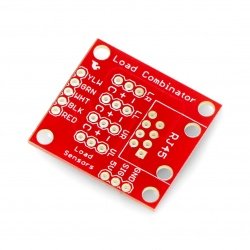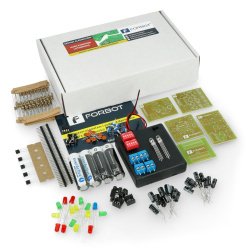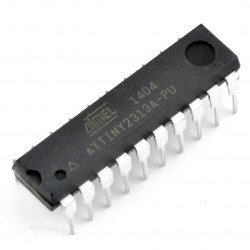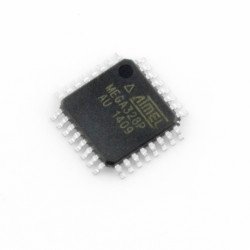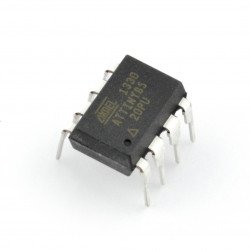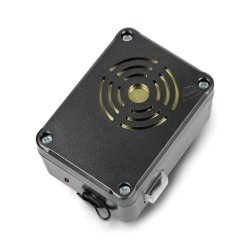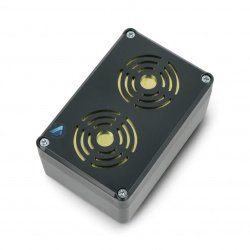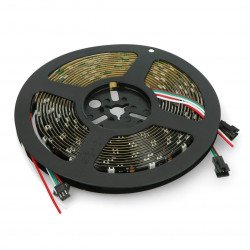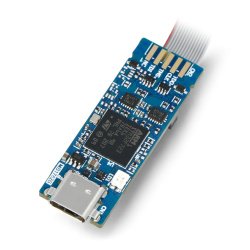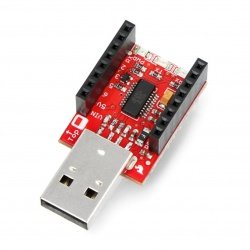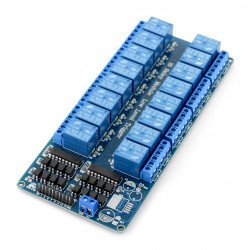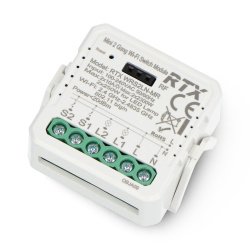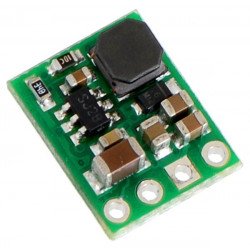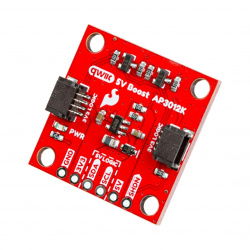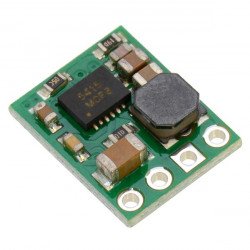- New
Gravity - force sensors and limit switches
DFRobot Gravity - capacitive touch sensor
Capacitive touch sensor uses a digital interface to work. It can be powered with the voltage from 3.3 V to 5 V. It feels the human or metak touch, even through a fabric or paper.DFRobot Gravity - vibration sensor with piezoelectric membrane
Analog vibration sensor with piezoelectric membrane. It is powered with the voltage from 3.3 V to 5 V, it works with Arduino modules.Gravity - 1 kg (10 N) digital pressure sensor - HX711 - Build a scale kit - DFRobot KIT0176
A set of elements for self-assembly , which allow to make an electronic balance . The kit contains a digital pressure sensor, in the form of a strain gauge bar, detecting...DFRobot Gravity - digital pressure sensor 1kg (10N)
Pressure sensor for Arduino works in the range of up to 1 kg. It is based on HX711, it has 24-bit analog-to-digital converter designed to scale weight and control applications...DFRobot Gravity - digital crash sensor (right)
The module is equipped with limit switch with lever with roller, it is designed for Arduino. It is powered with the voltage of 5 V.DFRobot Gravity - digital crash sensor (left)
The module is equipped with limit switch with lever with roller is designed for Arduino. It is supplied with the voltage of 5 V.See also
- Gravity - starter kits
- Gravity - base hats
- Gravity - accelerometers and gyroscopes
- Gravity - actuators
- Gravity - gas & dust sensors
- Gravity - medical sensors
- Gravity - distance sensors
- Gravity - current sensors
- Gravity - temperature sensors
- Gravity - light and colour sensors
- Gravity - LED
- Gravity - encoders and potentiometers
- Gravity - converters
- Gravity - communication modules
- Gravity - sound modules
- Gravity - relays
- Gravity - buttons, keys and joysticks
- Gravity - cables
- Gravity - displays
Limit switches - ideal for use in automation systems
From the point of view of wiring diagrams, limit switches are in fact monostable buttons, whose task is to switch electrical circuits on and off. In everyday practice, we can observe it during opening and closing of refrigerator door - in this case, the limit actuator is mechanically connected with the moving contact. When the fridge door is opened, such a switch switches on the power supply to the lighting circuit and switches it off when the door is closed. Other common examples of limit switches used in household appliances are microwave ovens and washing machines. In these devices, limit switches act as a safety device, which switches off the device in case of opening the working area, in which there are working moving elements. Limit switches are also used in automatic gates. When gate leaf during opening or closing process approaches extreme deadlock position, pusher of limit switch contact is pressed and disconnects power supply to the actuator driving the gate leaf.
Force Sensors - Build an Electronic Scale!
One of the most common design solutions for strain gauges are resistance sensors. The principle of operation of such a sensor is to change the output resistance in accordance with changes in the weight load acting on the surface of the sensor. Under the pressure surface of the sensor, there are two layers separated by air - a conductive layer and a dielectric layer. When the sensor surface is unloaded, the output resistance of the sensor is the highest. When the sensor surface is unloaded, the output resistance of the sensor is at its highest, while when it is loaded, the output resistance of the sensor decreases according to the load due to the deformation of its conductive layer. The most common applications using strain gauge sensors are electronic scales. In addition, such sensors are used in electric keyboard instruments (the so-called aftertouch), where according to the force of the keys we can control the output volume of the instrument or control parameters such as e.g. the depth of frequency modulation of sounds played on the keyboard.
Capacitive sensors
Besides the resistive sensors, very common technical solution are also capacitive sensors. The principle of operation of such a sensor is to detect the presence of objects whose electrical permeability is significantly different from the measuring medium, i.e. usually air. This fact has been exploited due to differences in the value of electrical permeability of air and human skin. The contact surface of capacitive sensors is usually made of glass. When we touch the surface of such a sensor, then changes in the electric field strength cause a change in the logic state at the sensor output.




















































































